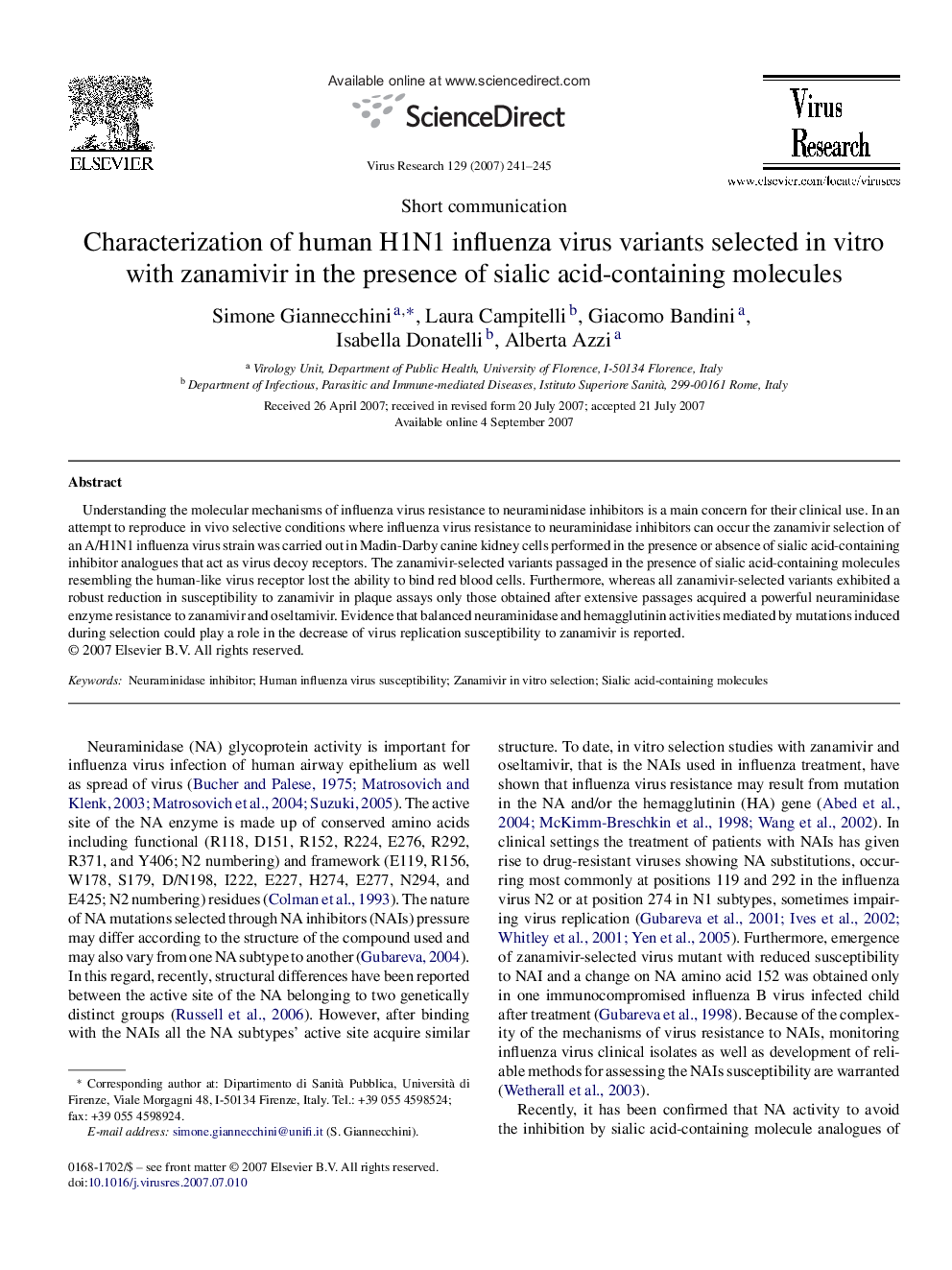| کد مقاله | کد نشریه | سال انتشار | مقاله انگلیسی | نسخه تمام متن |
|---|---|---|---|---|
| 3430764 | 1228283 | 2007 | 5 صفحه PDF | دانلود رایگان |

Understanding the molecular mechanisms of influenza virus resistance to neuraminidase inhibitors is a main concern for their clinical use. In an attempt to reproduce in vivo selective conditions where influenza virus resistance to neuraminidase inhibitors can occur the zanamivir selection of an A/H1N1 influenza virus strain was carried out in Madin-Darby canine kidney cells performed in the presence or absence of sialic acid-containing inhibitor analogues that act as virus decoy receptors. The zanamivir-selected variants passaged in the presence of sialic acid-containing molecules resembling the human-like virus receptor lost the ability to bind red blood cells. Furthermore, whereas all zanamivir-selected variants exhibited a robust reduction in susceptibility to zanamivir in plaque assays only those obtained after extensive passages acquired a powerful neuraminidase enzyme resistance to zanamivir and oseltamivir. Evidence that balanced neuraminidase and hemagglutinin activities mediated by mutations induced during selection could play a role in the decrease of virus replication susceptibility to zanamivir is reported.
Journal: Virus Research - Volume 129, Issue 2, November 2007, Pages 241–245